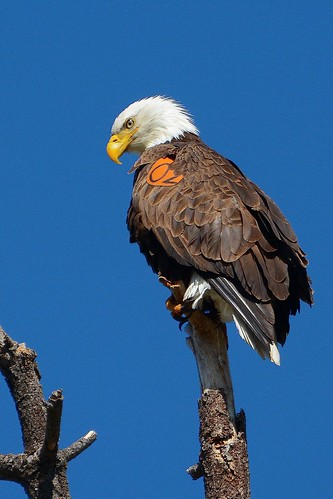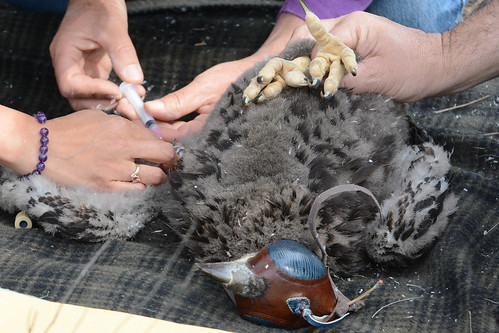
Listed as an endangered species in 1967 and ultimately de-listed in 2007, the effort to recover the American Bald Eagle (Haliaeetus leucocephalus) on national forests has been a rewarding endeavor for the San Bernardino National Forest.
As the district wildlife biologist for the San Jacinto Ranger District, I’ve been fortunate enough to coordinate with the Lake Hemet Municipal Water District to monitor breeding success and to provide viewing opportunities for the public. Lake Hemet, created in 1891, is now home to a pair of beautiful bald eagles.
With the aid of volunteers, I’ve been monitoring these birds for more than 13 years and raising awareness of the diverse wildlife that surrounds us. When people come to fish at Lake Hemet, they often surprised that they can see bald eagles here. Unlike other bald eagles that fly back north for the spring/summer, our eagles do not migrate and actually nest here.
Volunteer monitoring efforts in 2002 and 2003 detected the first known nest and fledging of two chicks. Annual viewing opportunities and monitoring data is collected in hopes of understanding how the birds use the forest resources around the lake and to contribute to recovery efforts.
The 2004 and 2005 monitoring showed us that the original female eagle “disappeared” and a new female arrived, complete with orange patagial tags (small, individually numbered plastic tags to their legs or wings). The current female “K-02” comes from Catalina Island as part of the captive breeding program, and is about 13 years old. The male is un-banded.
Volunteer monitoring not only helped us with ages and location of the eagles but it has also helped reduce the loss of offspring. In 2007, we were able to capture a chick that fell from the nest with a broken right wing, rehabilitate it, and release it six weeks later.
Volunteer efforts from eagle enthusiasts have greatly contributed to the success of these birds. In 2007 and 2012, volunteers raised funds and constructed nest platforms in response to several unsuccessful fledging attempts. From 2007 to 2013, the pair has continually used the platforms and has successfully reared 1-2 offspring per year.
Through the involvement of our volunteers, the Forest Service hopes to actively contribute to the recovery of the bald eagle, while providing a unique recreation opportunity. Once a federally listed endangered species, the recovery of the bald eagle is a true success story.

